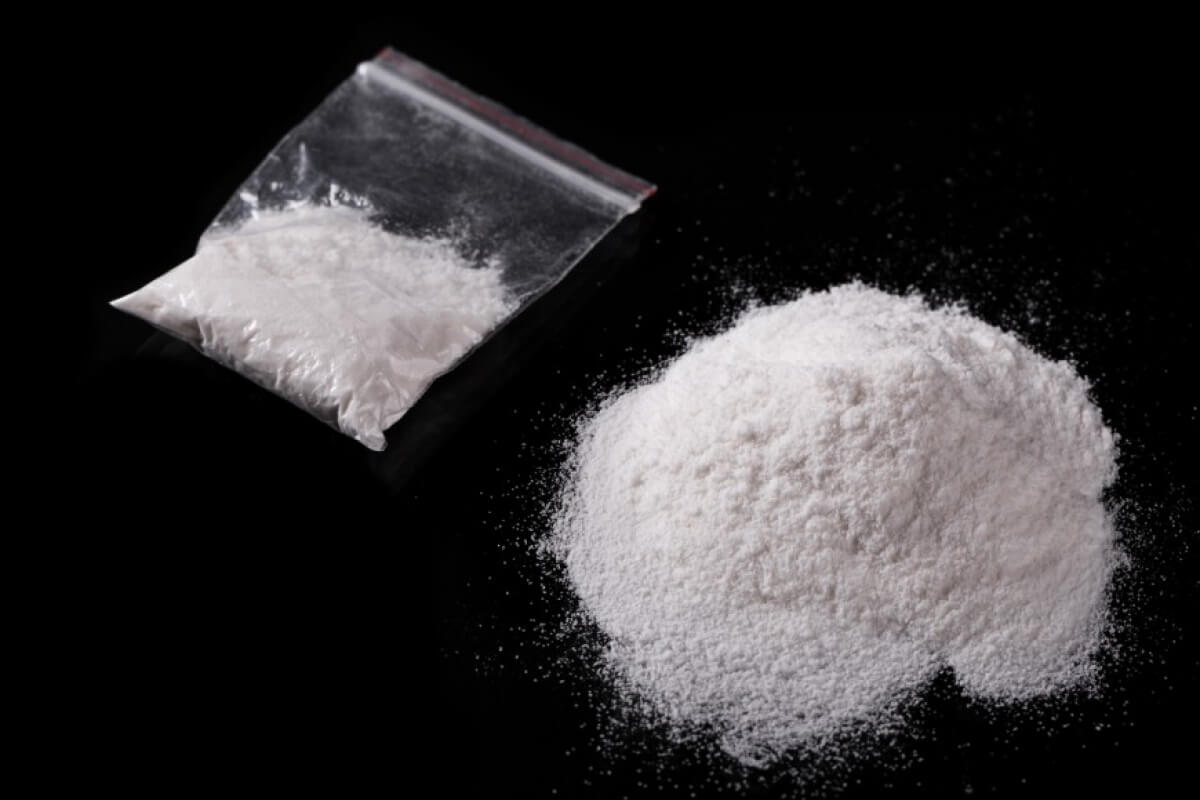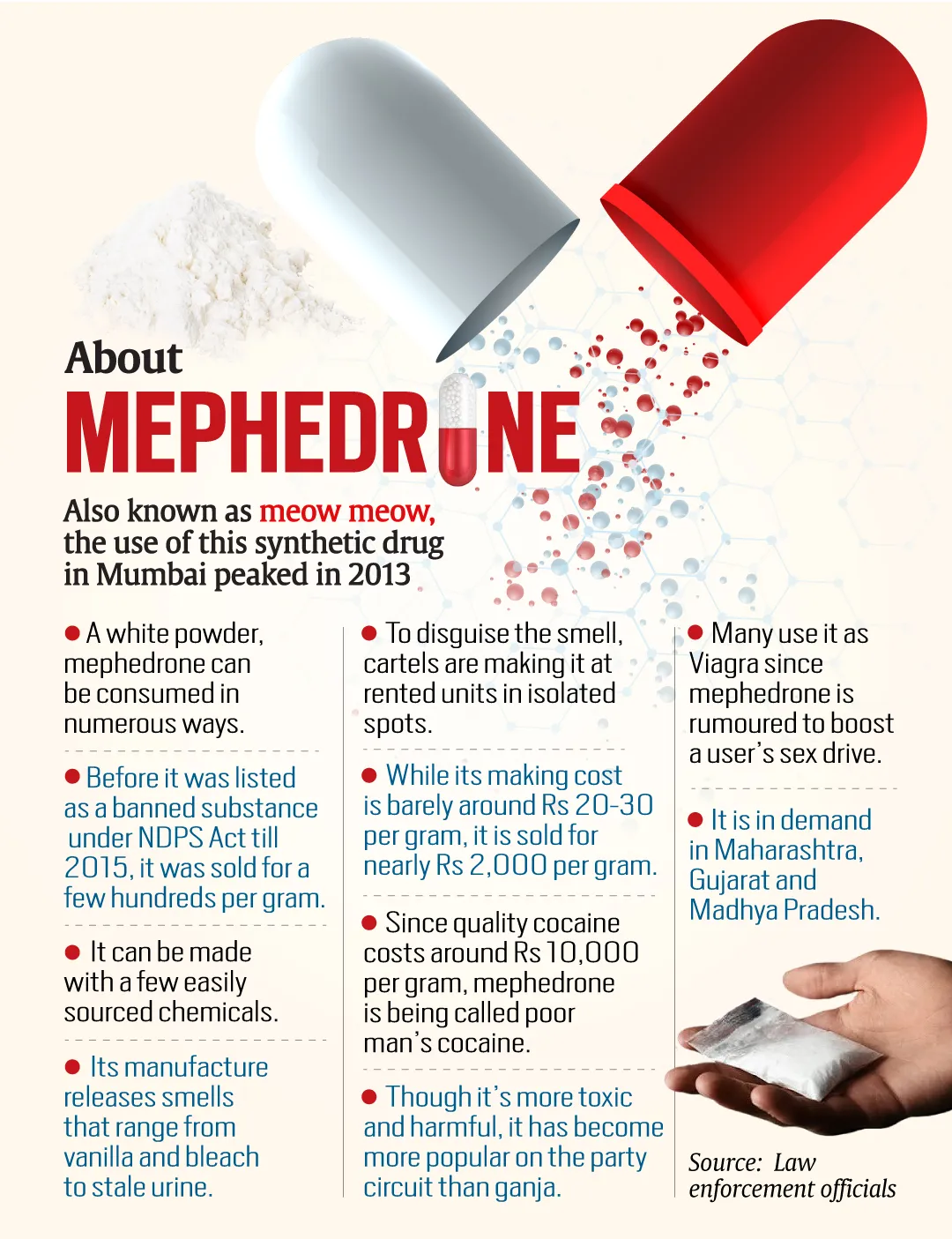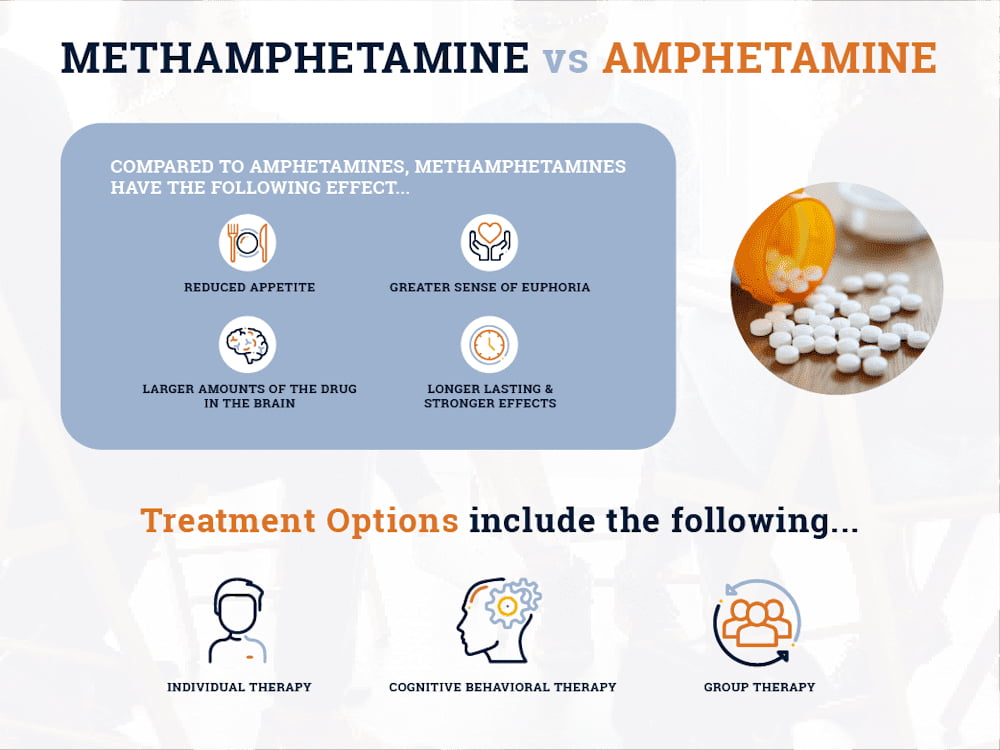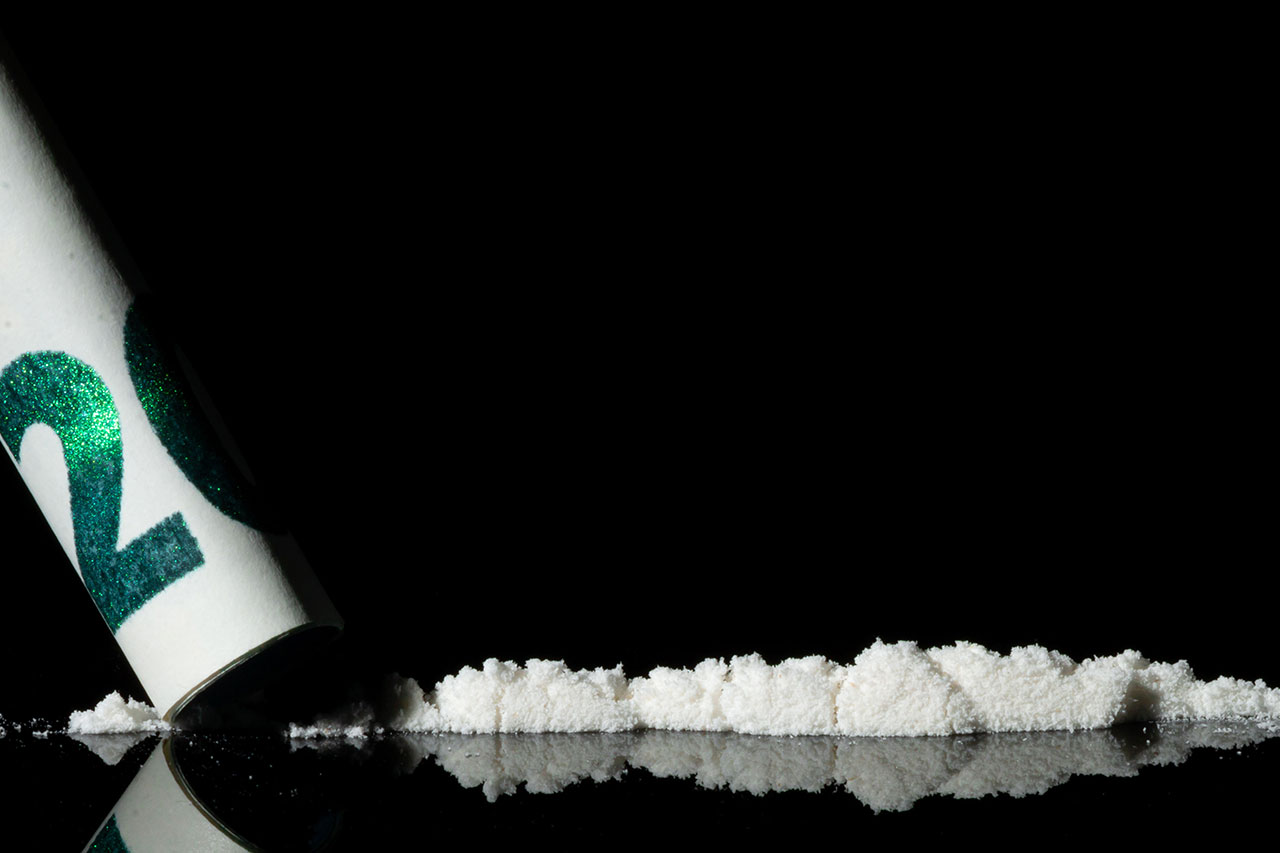Amphetamine vs. Mephedrone: why is it important to know the difference between these psychoactive substances? Which substance affects the body more? Which of these substances can cure a person of some diseases and which can kill a person? You can read the answers to these questions and many others in our publication dedicated to describing the differences between the most famous drugs in the world.
What are amphetamines, exactly?
Amphetamine is a narcotic substance belonging to the category of psychostimulants. The second pharmacological name of the drug is fenamine. Amphetamine addiction is a common phenomenon among drug addicts. The use of the drug contributes to the rapid deterioration of the body and the degradation of the personality. The main group of drug users is young people at the age of 16 to 35 years old and many patients get addicted after the first use.
Amphetamine was originally used in medicine as one of the ingredients for nasal congestion and mucous membrane swelling. Then it began to be added to drugs for Parkinson’s disease and epilepsy. At that time, the drug was readily available from pharmacists. In the 1940s, the first cases of non-medical use of the drug were recorded.
Once in the body, the drug activates the increased production of hormones. The concentration of norepinephrine, serotonin and dopamine increases. The substance improves mood, increases the ability to concentrate and sharpens attention. The drug amphetamine provides motor and speech activity. After its intake the performance of the addict increases manifold, the need for food and rest disappears. Use of phenamine “speeds up” the work of CNS and brain to a maximum.
Internal organs and systems start to work at their maximum capacity. Stamina increases repeatedly, increased craving for communication, shyness and fatigue disappears. Often after taking the drug the addict feels like a superhero who can not sleep for days, memorize a lot of data, do hard work and so on.
When the drug enters the body, it triggers the synthesis of neurotransmitters, affecting the nervous system. The effect on the CNS is accompanied by a strong euphoria. The patient has increased concentration, becomes self-confident and talkative. In some cases after using the drug the person suffers from panic attacks and paranoid ideas.
When the drug affects the peripheral nervous system, the following effects of amphetamine are observed:
- dilated pupils;
- palpitations;
- hypertension;
- dry mouth;
- chills;
- increase in body temperature.
After completing the action of the drug, the patient experiences severe fatigue and lethargy. He becomes aggressive and irritable. To feel a sense of euphoria again the addict takes a new dose. Depending on the amount of the drug taken and metabolism peculiarities, amphetamine action lasts from 4 hours to 3 days.
What Is Mephedrone?
Mephedrone (4-methylmethcathinone) is a synthetic cathinone, a class of psychoactive substances derived from the naturally occurring stimulant cathinone found in the khat plant (Catha edulis). 4mmc is a substance of abuse (mephedrone abuse). Since its emergence in the early 2000s, mephedrone has gained popularity as a recreational drug due to its stimulant and empathogenic effects, which are often compared to those of mephedrone and MDMA (3,4-methylenedioxymethamphetamine). However, the use of mephedrone has been associated with various adverse effects, including serotonin syndrome, a potentially life-threatening condition resulting from increased serotonergic activity in the central nervous system (CNS).
Its action is based on increasing the concentration of catecholamines and monoamines in the nervous system. It increases the activity of the proteins that transport serotonin, dopamine and norepinephrine from the neurons into the synaptic clefts.
In addition, 4mmc inhibits the reuptake of these substances and reduces the activity of the enzymes that break them down. The amount of norepinephrine, which is responsible for mental and physical activity, increases dramatically. The content of serotonin and dopamine increases, providing euphoria, increased mood and a desire to communicate.
There are many ways to use mephedrone: orally, intranasally, intravenously, rectally. The probability of overdose and lethal outcome increases with intravenous injection of the drug solution, as in this case a large amount of the substance enters the bloodstream at one time.
Every recreational user faces the problem of individualizing the dosage of mephedrone. In most cases, the use of cathinones is carried out by imprecise calculation of the dose by the length of the “track” of crystals, without taking into account a large number of nuances (purity of the product, presence of tolerance, method of use, combination of mephedrone with other psychoactive substances, presence of diseases and so on).
Undoubtedly, 4-mmc is harmful to health and the use of this substance is associated with high risks, but if used competently, it is possible to minimize the risks and reduce the likelihood of side effects. Mephedrone can be consumed in a variety of ways: “bombs” in the form of gelatin capsules, pressed tablets, white powder (crystals), mephedrone hydrochloride solution (parenterally), smoking mephedrone crystals (ineffective and dangerous) and using a rectal suppository (dangerous).
Amphetamine vs. Mephedrone: what is the difference?
Both amphetamine and mephedrone are psychoactive CNS stimulants. The chemical structure of each drug is very similar, but mephedrone is generally considered more potent than amphetamine. Because of this, a person may become addicted to 4-MMC more quickly, although both drugs are highly addictive when abused.
When taken in similar doses, more 4-MMC reaches the brain. This is because it is easier for mephedrone to cross the blood-brain barrier. This is the main reason why mephedrone is a more potent and addictive drug. Mephedrone also lasts longer and creates a more pronounced euphoric effect, making it more attractive to recreational drug users.
Both amphetamine and mephedrone alter the production of key neurotransmitters in the brain responsible for mood, energy and executive function. These include serotonin, dopamine and norepinephrine. Excess dopamine induces the pleasurable euphoric feelings associated with abuse of these drugs.
Although both drugs cause a spike in dopamine, studies show that mephedrone can produce more. One study showed that mephedrone releases five times more dopamine than amphetamine. This action is probably another reason why mephedrone is more addictive.
4-MMC activates the CNS more fully than amphetamine. It also exposes the CNS to more danger than amphetamine. However, 4-MMC causes less stimulation of the peripheral nervous and cardiovascular systems.
Because of its potency and greater ability to be addictive, mephedrone is less often prescribed for ADHD compared to amphetamine-based medications. Because of this, and the fact that 4-MMC is produced illegally, many experts believe that mephedrone is more available for abuse than amphetamine. In addition to pill form, MCAT is available as a white bitter powder or a vitreous bluish stone called crystal MCAT.
Summary
The main difference between amphetamine and MCAT is that more mephedrone enters the brain than amphetamine, which means that 4-MMC is more potent. Mephedrone’s side effects also last longer than amphetamine, making it a stronger and more addictive drug. In addition, 4-MMC is a street drug that contains many harmful chemicals.
Unlike amphetamine, whose creation and production is more controlled, MCAT is made from random substances ranging from anhydrous ammonia to acetone to fentanyl. Amphetamine, unless sold as a street drug, or “speed” or “meth,” does not contain these chemicals, making it suitable for medical practice and prescription use.
Regardless of their differences, one thing is certain: both amphetamine and meth are addictive and dangerous. Many people have been particularly affected by the effects of crystal meth abuse, which can lead to tooth loss and tooth decay (meth), skin skin skin and skin disease (meth), kidney damage, liver damage, cardiovascular disease, and much more.
FAQ
What are amphetamines?
Amphetamine consists mostly of prescription stimulants and is the weakest type of stimulant. These pharmaceuticals are prescribed to treat conditions such as ADHD, narcolepsy, and weight loss. Thus, amphetamines are usually in the form of tablets or capsules for oral use (although people who abuse these drugs may snort them, smoke them, or inject them). Common types of amphetamines include:
- Adderall
- Dexedrine
- Vyvanse
Although all (legal) amphetamines are prescription, not all prescription stimulants are amphetamines.
What are mephedrone?
Mephedrone is a type of amphetamine. They have similar molecular structures, similar working mechanisms, and therefore have similar effects such as euphoria and increased energy. MCAT increases dopamine levels and blocks its reuptake, resulting in extremely high concentrations of dopamine in the brain. However, 4-MMC is much stronger than prescription stimulants and other amphetamines in general. This, in addition to the intent with which the meth is used, is the biggest difference between the two substances.
Which is more dangerous: addiction to amphetamine or mephedrone?
When it comes to addiction to amphetamines and mephedrones, both carry significant risks. Both drugs lead to unnaturally high levels of dopamine production, which inherently puts users at risk of developing tolerance and addiction (not to mention the risk of overdose and other consequences such as breathing problems, health problems and serious dental damage). However, the increased effectiveness of crystal MCAT also makes addiction to it even more dangerous than addiction to prescription amphetamines.
What are the similarities between amphetamine and mephedrone?
Both drugs are abused because of their stimulant and euphoric effects. Many people misuse prescription versions as performance enhancing drugs. To that end, they can be used for better performance in academic, athletic, or professional activities.
Both medications can be taken while on a binge or during a “run.” A jogging is an overdose in which a person abstains from eating and sleeping for several days. During this period, the drug is taken every few hours. The person may “tune out” and become very irritable or paranoid while jogging. Overeating greatly increases the chances of overdosing.
Chronic abuse of any of these drugs can cause psychosis resembling schizophrenia. When this occurs, a person may become paranoid and hallucinate seeing or hearing things that are not there. They may believe that there are bugs crawling on or under their skin (“weirdo bugs”), causing them to pick at their skin. At this time, some people may be aggressive, compromising their safety or the safety of others.
Which is stronger – mephedrone or amphetamine?
The structural formulas of the phenylalkylamines are incredibly similar in appearance. A look at Mephedrone reveals a difference only in the additional methyl group (-CH3). Thanks to this “change”, it has a better solubility (it penetrates the brain faster). The chemical characteristics of 4-MMC give it hallucinogenic properties. The effect occurs quickly and lasts for a long time (as compared to its predecessor) – from 8 (12) hours to 3 days (depending on the dose). MCAT hydrochloride powder is used to prepare injection solutions. Large crystals are crushed for smoking, intranasal (sniffing) and oral administration (usually added to tea, sweet drinks).




